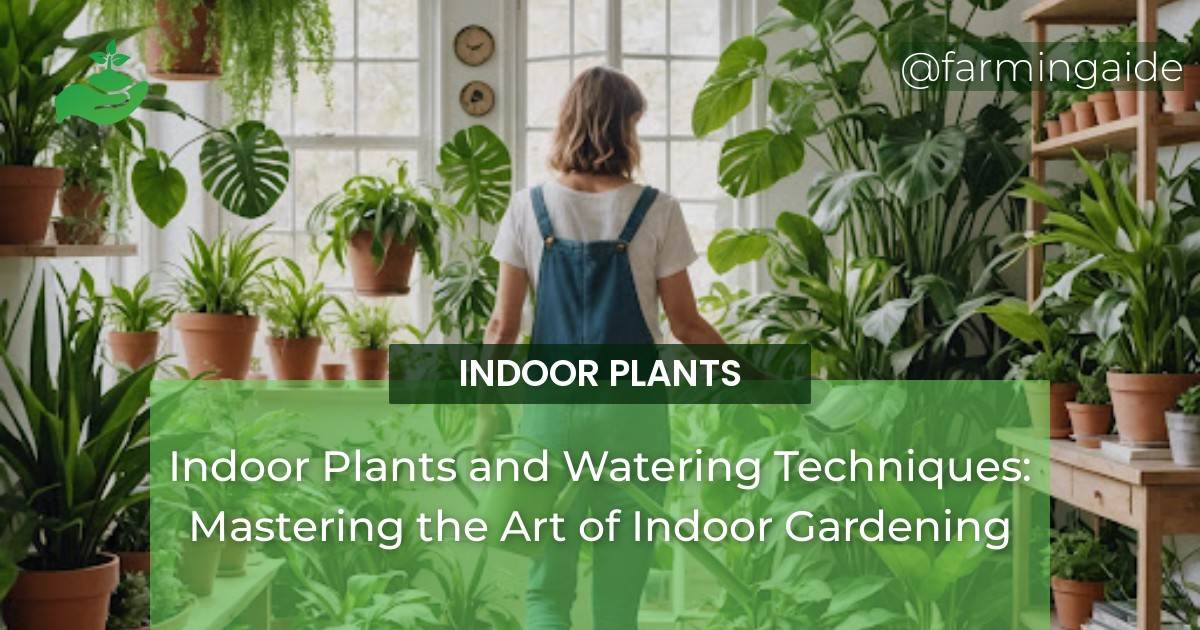Welcome to the world of indoor gardening, where the right watering techniques can make all the difference in the health and beauty of your plants. In this comprehensive guide, we’ll delve into the intricacies of indoor plant watering, covering the essential techniques, tools, and schedules to ensure your plants thrive. Whether you’re a seasoned gardener or a beginner, this article will equip you with the knowledge to master the art of indoor plant watering.
Key Takeaways
- Understanding plant watering needs and adjusting accordingly
- Mastering optimal watering techniques for different plant types
- Selecting the right watering tools and methods for effective watering
- Creating a personalized watering schedule for your indoor garden
- Troubleshooting common watering issues and maintaining plant health
Understanding Indoor Plant Watering Needs
Before we dive into the world of indoor plant watering, it’s essential to understand the unique needs of your plants. Overwatering and underwatering are two of the most common mistakes that can lead to plant demise. To avoid these pitfalls, it’s crucial to recognize the signs of both.
Factors Affecting Water Requirements
Several factors influence a plant’s watering needs, including:
- Plant species and type
- Soil composition and moisture levels
- Light exposure and temperature
- Humidity and air circulation
- Pot size and material
Signs of Overwatering and Underwatering
Be aware of the following signs to adjust your watering schedule accordingly:
| Signs of Overwatering | Signs of Underwatering |
|---|---|
| Yellowing leaves | Wrinkled or curled leaves |
| Soft, mushy stems | Faded or wilted leaves |
| Water pooling around the base | Soil feels dry to the touch |
Optimal Watering Techniques for Different Plant Types
Different plants have unique watering requirements. Let’s explore the optimal techniques for three popular indoor plant categories:
ALSO READ
Succulents and Cacti Watering Tips
Succulents and cacti thrive in well-draining soil and require infrequent watering. Water sparingly, allowing the soil to dry completely between waterings.
Watering frequency: 1-2 times a month, depending on the species and climate.
Moisture-Loving Plants Watering Guide
Moisture-loving plants, such as ferns and peace lilies, prefer consistent moisture levels. Water them when the top 1-2 inches of soil feel dry to the touch.
Watering frequency: 2-3 times a week, depending on the species and climate.
ALSO READ
Watering Frequency for Tropical Plants
Tropical plants, such as bromeliads and orchids, require moderate watering. Water them when the top 1 inch of soil feels dry, taking care not to overwater.
Watering frequency: 1-2 times a week, depending on the species and climate.
Tools and Methods for Effective Watering
The right tools and methods can make a significant difference in the effectiveness of your watering routine:
Choosing the Right Watering Can
Select a watering can with small holes or a fine rose to prevent washing away soil or disturbing roots.
Drip Irrigation Systems for Indoor Plants
Drip irrigation systems deliver water directly to the roots, reducing evaporation and runoff.
Self-Watering Planters Benefits
Self-watering planters feature a built-in water reservoir, reducing the frequency of watering and minimizing the risk of overwatering.
Creating a Watering Schedule for Your Indoor Garden
A personalized watering schedule takes into account the unique needs of your plants, as well as the climate and season:
Seasonal Adjustments in Watering
Adjust your watering schedule according to the season:
- Winter: Reduce watering frequency due to lower temperatures and humidity.
- Spring and summer: Increase watering frequency as plants grow and temperatures rise.
- Fall: Gradually reduce watering frequency as the weather cools.
Monitoring Soil Moisture Levels
Regularly check soil moisture by inserting your finger into the soil up to the knuckle. If the soil feels dry, it’s time to water.
Troubleshooting Common Watering Issues
Identify and address common watering issues to prevent plant stress and disease:
Dealing with Waterlogged Soil
If you notice water pooling around the base of your plant, stop watering immediately and repot the plant in well-draining soil.
Solutions for Dry Spots in Your Indoor Garden
If you notice dry spots or crispy leaves, increase watering frequency or adjust your watering schedule accordingly.
Conclusion: Mastering the Balance in Indoor Plant Watering
Mastering the art of indoor plant watering requires attention to detail, patience, and practice. By understanding your plants’ unique needs, selecting the right tools and methods, and creating a personalized watering schedule, you’ll be well on your way to creating a thriving indoor garden. Remember to monitor and adjust your watering routine regularly to ensure the health and beauty of your plants.
Happy planting!


